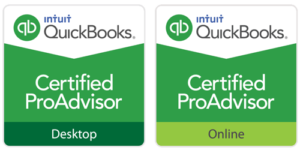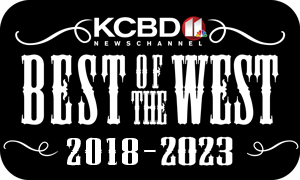The Senate and House have both voted and passed the final CARES Act. The President has indicated that he will be signing the CARES Act into law shortly. Please see below for a detailed synopsis of the provisions. As this is fresh off the press, we wanted to provide a full detail to you. We are working diligently to prepare to assist all of our clients that can benefit from the act.
System Enhancements, and Economic Stabilization
Title I—Keeping American Workers Paid and Employed Act
The CARES Act amends the Small Business Act (SBA) to create a new Business Loan Program category (hereinafter, the “program”). For the period from February 15, 2020 to June 30, 2020 (covered period), the law allows the Small Business Administration (Administration) to provide 100% federally-backed loans up to a maximum amount to eligible businesses to help pay operational costs like payroll, rent, health benefits, insurance premiums, utilities, etc. Subject to certain conditions, loan amounts are forgivable (see more detailed discussion on loan forgiveness below).
GENERAL LOAN TERMS AND PROGRAM OPERATIONS
The SBA allows the Administrator to provide loans directly or in cooperation with the private sector through agreements to participate on an immediate or deferred (guaranteed) basis. Lenders authorized to make loans under the SBA’s current Business Loan Program are automatically approved to make and approve loans under this new program, and they may opt to participate in the program under the terms and conditions established by the Department of Treasury (Treasury). Additionally, the Treasury Secretary may extend such authority to additional private sector lenders under criteria established by Treasury (including, for instance, allowing additional lenders to originate loans).
The Administrator may guarantee covered loans under this program on the same terms, conditions, and processes as a loan made under the SBA’s current Business Loan Program. No collateral or personal guarantee is permitted to be required for a loan. The interest rate on loans under the program is not to exceed four percent. There will be no subsidy recoupment fee associated with the loans and no prepayment penalty for any payments made. Additionally, the Administrator has no recourse against any individual, shareholder, member, or partner of an eligible loan recipient for non-payment, unless the individual uses the loan proceeds for unauthorized purposes (see discussion below of permitted uses).
A loan made under the SBA’s Disaster Loan Program on or after January 31, 2020, may be refinanced as part of a covered loan under this new program as soon as these new loans are made available. The CARES Act specifically allows SBA Disaster Loan recipients with economic injury disaster loans made since January 31, 2020 for purposes other than the permitted loan uses under this program to receive assistance under this program.
Unlike prior drafts of the CARES Act, the final version contains a “Sense of the Senate” that the Administrator should issue guidance to lenders and agents to ensure that processing and disbursement of covered loans prioritizes:
· Small business concerns;
· Entities in underserved and rural markets (including veteran communities);
· Small business concerns owned by socially and economically disadvantaged individuals;
· Women; and
· Businesses in operation for less than two years.
ELIGIBLE LOAN RECIPIENTS
In addition to “small business concerns” as currently defined under the SBA, eligible businesses for the new program include any business concern, nonprofit organization, veterans’ organization, or Tribal business if it employs not more than the greater of—
· 500 employees (includes full-time, part-time, and those employed on other bases); or
· If applicable, the size standard in number of employees established by the Administration for the industry in which the entity operates.
There is a special eligibility rule for businesses in the hospitality and dining industries. For businesses with more than one physical location, if it employs 500 or fewer employees per location and is assigned to the “accommodation and food services” sector (Sector 72) under the North American Industry Classification System (NAICS), the business is eligible to receive a loan.
SBA regulations on entity affiliations (under 13 CFR 121.103) are waived for the covered period for business concerns, non-profits, and veterans’ organizations for:
· Businesses in Sector 72 under the NAICS with 500 or fewer employees;
· Franchise businesses with SBA franchisor identifier codes; and
· Any business that receives financial assistance from a company licensed under section 301 of the Small Business Investment Act.
Sole proprietors, independent contractors, and eligible self-employed individuals (as defined in Congress’s last COVID-19 bill, the Families First Coronavirus Response Act (Families First Act)) are eligible for loan recipients, subject to some documentation requirements to substantiate eligibility.
Loan Maximum, Borrower Eligibility Requirements, and Permissible Uses
The maximum loan amount (capped at $10 million) is the lesser of:
(A)
· 2.5 times average total monthly payroll costs incurred in the one-year period before the loan is made (or for seasonal employers the average monthly payroll costs for the 12 weeks beginning on February 15, 2019, or from March 1, 2019 to June 30, 2019);
· PLUS the outstanding amount of a loan made under the SBA’s Disaster Loan Program between January 31, 2020 and the date on which such loan may be refinanced as part of this new program;
OR
(B) Upon request, for businesses that were not in existence during the period from February 15, 2019 to June 30, 2019 –
· 2.5 times the average total monthly payroll payments from January 1, 2020 to February 29, 2020;
· PLUS the outstanding amount of a loan made under the SBA’s Disaster Loan Program between January 31, 2020 and the date on which such loan may be refinanced as part of this new program;
OR
(C) $10 million.
There are very few borrower requirements to obtain a loan under the new program. Those requirements include a good-faith certification that:
· The loan is needed to continue operations during the COVID-19 emergency;
· Funds will be used to retain workers and maintain payroll or make mortgage, lease, and utility payments;
· The applicant does not have any other application pending under this program for the same purpose; and
· From February 15, 2020 until December 31, 2020, the applicant has not received duplicative amounts under this program.
Businesses may, in addition to uses already allowed under the SBA’s Business Loan Program, use the loans for:
· Payroll costs:
o Includes: compensation to employees, such as salary, wage, commissions, cash, etc.; paid leave; severance payments; payment for group health benefits, including insurance premiums; retirement benefits; state and local payroll taxes; and compensation to sole proprietors or independent contractors (including commission-based compensation) up to $100,000 in 1 year, prorated for the covered period;
o Excludes: individual employee compensation above $100,000 per year, prorated for the covered period; certain federal taxes; compensation to employees whose principal place of residence is outside of the US; and sick and family leave wages for which credit is allowed under the Families First Act;
· Group health care benefits during periods of paid sick, medical, or family leave, and insurance premiums;
· Salaries, commissions, or similar compensations;
· Payments of interest on mortgage obligations;
· Rent/lease agreement payments;
· Utilities; and
· Interest on any other debt obligations incurred before the covered period.
In evaluating eligibility of borrowers, a lender must consider whether the borrower was operating on February 15, 2020 and had employees or independent contractors for whom the borrower paid.
LOAN FORGIVENESS AND PAYMENT DEFERRAL RELIEF
Regarding loan payment deferral rights, the CARES Act provides that businesses that were operating on February 15, 2020 and that have a pending or approved loan application under this program are presumed to qualify for complete payment deferment relief (for principal, interest, and fees) for six months to one year. Lenders are required to provide such relief during the covered period (if secondary market investors decline to approve a lender’s deferral request, the Administration must purchase the loan). The Administrator has 30 days from enactment of the CARES Act to provide guidance to lenders on this process.
The program loans qualify for the CARES Act’s broader loan forgiveness provisions in Section 1106. Specifically, indebtedness is forgiven (and excluded from gross income) in an amount (not to exceed the principal amount of the loan) equal to the following costs incurred and payments made during the covered period:
· Payroll costs;
· Interest payments on mortgages;
· Rent; and
· Utility payments.
Forgiveness amounts will be reduced for any employee cuts or reductions in wages.
The reduction formula for fewer employees is:
1. The maximum available forgiveness under the rules described above multiplied by:
2. Average number of full-time equivalent employees (FTEEs) per month – calculated by the average number of FTEEs for each pay period falling within a month – during the covered period divided by:
Either (at election of the borrower) –
· Average number of FTEEs per month employed from February 15, 2019 to June 30, 2019; or
· Average number of FTEEs per month employed from January 1, 2020 until February 29, 2020;
Or, for seasonal employers –
· Average number of FTEEs per month employed from February 15, 2019 until June 30, 2019.
Note that this formula will be used to reduce forgiveness amounts, but cannot be used to increase them.
For reductions in wages, the forgiveness reduction is a straight reduction by the amount of any reduction in total salary or wages of any employee during the covered period that is in excess of 25% of the employee’s salary/wages during the employee’s most recent full quarter of employment before the covered period. “Employee” is limited, for purposes of this subparagraph only, to any employee who did not receive during any single pay period during 2019 a salary or wages at an annualized rate of pay over $100,000.
There is relief from these forgiveness reduction penalties for employers who rehire employees or make up for wage reductions by June 30, 2020. Specifically, in the following circumstances, the forgiveness reduction rules above will not apply to an employer between February 15, 2020 and 30 days following enactment of the CARES Act –
· The employer reduces the number of FTEEs in this period and, not later than June 30, 2020, the employer has eliminated the reduction in FTEEs; or
· There is a salary reduction, as compared to February 15, 2020, during this period for one or more employees and that reduction is eliminated by June 30, 2020 (it is unclear whether this is also intended to be limited to employees who made under $100,000 in 2019).
The CARES Act clarifies that employers with tipped employees (as described in the Fair Labor Standards Act) may receive forgiveness for additional wages paid to those employees. Also, emergency advances received under the expanded SBA Disaster Loan Program discussed below will be excluded from forgiveness amounts.
Within 90 days of determining the ultimate forgiveness amount, the Administrator must remit payment plus interest accrued through the date of payment to the lender. Authorized lenders and secondary market participants (at the discretion of the Administrator) may report expected forgiveness amounts, up to 100% of principal, on program loans or on pools of such loans. The Administrator must purchase the expected forgiveness amounts in such reports within 15 days.
There are some required processes to apply for loan forgiveness. Borrowers seeking forgiveness of amounts must submit to their lender –
· Documentation verifying FTEE on payroll and their pay rates;
· Documentation on covered costs/payments (e.g., documents verifying mortgage, rent, and utility payments);
· Certification from a business representative that the documentation is true and correct and that forgiveness amounts requested were used to retain employees and make other forgiveness-eligible payments; and
· Any other documentation the Administrator may require.
Lenders who rely on documentation and accompanying certifications are held harmless from SBA enforcement actions and penalties relating to the loan forgiveness.
Forgiveness amounts that would otherwise be includible in gross income, for federal income tax purposes, are excluded.
The Administrator has 30 days following enactment of the CARES Act to issue regulations on these forgiveness provisions.
ADDITIONAL PROVISIONS
The CARES Act also:
· Waives certain fees that would otherwise apply under the SBA, as well as the usual requirement that a small business concern be unable to obtain credit elsewhere;
· Provides that loan balances following any forgiveness reductions will continue to be guaranteed by the Administration in accordance with this program;
· Establishes a maximum maturity date for loans under the program from the date the borrower applies for loan forgiveness;
· Stipulates that loans under the program are eligible to be sold in the secondary market consistent with rules under the current SBA Business Loan Program;
· Mandates a zero percent risk-weight of these loans for purposes of banking regulators’ risk-based capital requirements;
· For banks that modify the loans in a troubled debt restructuring related to COVID-19 on or after March 13, 2020, provides temporary relief from FASB’s troubled debt restructuring disclosure requirements;
· For participating lenders, sets forth compensation (based on loan balance at time of disbursement) of:
o Five percent for loans of $350,000 or less;
o Three percent for loans above $350,000 and less than $2 million; and
o One percent for loans $2 million and above;
· Prohibits agents helping applicants apply for loans under the program from receiving a fee in excess of limits established by the Administrator;
· From February 15, 2020 until June 30, 2020, increases authorized commitments for SBA Business Loans, including those under this new program, to $349 billion (and takes those commitments out of the usual Business Loan Program Account); and
· Increases the loan limit for the SBA’s Express Loan Program to $1 million (from $350,000) with a prospective repeal date of January 1, 2021.
EXPANSION OF SBA DISASTER LOAN PROGRAM
In addition to expansion of the SBA’s Business Loan Program described above, the CARES Act expands the SBA’s Disaster Loan Program. The covered period for this section is January 31, 2020-December 31, 2020. In addition to current eligible entities, the following may receive SBA disaster loans:
· A business with 500 or fewer employees;
· Sole proprietorships, with or without employees, and independent contractors;
· Cooperatives with 500 or fewer employees;
· ESOPs with 500 or fewer employees; and
· Tribal small business concerns.
The CARES Act makes the following additional changes to the SBA Disaster Loan program during the covered period for loans made in response to COVID-19:
· Waives rules related to personal guarantees on advances and loans of $200,000 or less for all applicants;
· Waives the “1 year in business prior to the disaster” requirement (except the business must have been in operation on January 31, 2020);
· Waives the requirement that an applicant be unable to find credit elsewhere; and
· Allows lenders to approve applicants based solely on credit scores (no tax return submission required) or “alternative appropriate methods to determine an applicant’s ability to repay.”
Entities applying for loans under the Disaster Loan Program in response to COVID-19 may, during the covered period, request an emergency advance from the Administrator of up to $10,000, which does not have to be repaid, even if the loan application is later denied. The Administrator is charged with verifying an applicant’s eligibility by accepting a “self-certification.” Advances are to be awarded within three days of an application.
Advances may be used for purposes already authorized under the SBA Disaster Loan Program, including:
· Providing sick leave to employees unable to work due to direct effect of COVID-19;
· Maintaining payroll during business disruptions during slow-downs;
· Meeting increased supply chain costs;
· Making rent or mortgage payments; and
· Repaying debts that cannot be paid due to lost revenue.
If an entity that receives an emergency advance transfers into, or is approved for, a loan under the SBA Business Loan Program (described in the section above), the advance amount will be reduced from any payroll cost forgiveness amounts.
The CARES Act would deem all states and their subdivisions to have sufficient economic damage to small business concerns to qualify for assistance under this loan program (rather than the current state declaration and certification approach).
LOAN PAYMENT SUBSIDIES FOR CERTAIN LOANS
This section covers loans –
· Guaranteed by the Small Business Administrator under:
o The SBA Business Loan Program (including the Community Advantage Pilot Program, but excluding the new payroll loan program established under Section 1102); or
o Title V of the Small Business Investment Act; or
· Made by an intermediary to a small business concern using loans or grants received under the SBA’s Microloan Program.
With respect to these loans, it is the Sense of the Congress that the Administration, in addition to the SBA relief already provided under the CARES Act, “should encourage lenders to provide payment deferments, when appropriate, and to extend the maturity of covered loans, so as to avoid balloon payments or any requirement for increases in debt payments resulting from deferments provided by lenders” during the COVID-19-declared emergency.
Additionally, for these loans, the Administrator must pay (and relieve the borrower of any obligation to pay) the principal, interest, and any associated fees owed in a regular servicing status:
· For loans made before this bill is enacted not on deferment, for the six-month period beginning with the next payment due;
· For loans made before this bill is enacted that are on deferment, for the six-month period beginning with the next payment due after deferment; and
· For loans made within six months of enactment of this bill, for six months after the first payment is due.
The CARES Act also instructs the Administrator to work with the Federal Deposit Insurance Corporation (FDIC), the Office of the Comptroller of Currency, and state banking regulators to:
· Not require lenders to increase their reserves based on payments received from the Administrator under this section;
· Waive statutory limits on maximum loan maturities for certain covered loans; and
· Extend lender site visit requirements to account for volume increases, travel restrictions, etc., during the COVID-19 emergency to –
o Not more than 60 days (which may be extended at the Administrator’s discretion) following the occurrence of an adverse event (other than payment default) that sends a loan into liquidation; and
o Not more than 90 days after a payment default.
Emergency Rulemaking Authority for Small Business Administration
The Administrator is directed to issue regulations to carry out all of the CARES Act Title I provisions described above within 15 days of enactment of the law and waives the notice requirements under the Administrative Procedures Act for such rulemakings.





